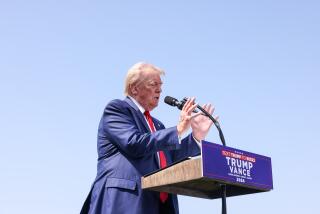Counterfeit Chic Exacts High Toll on Originals : Marketing: Knockoffs of brand names such as Rolex, Chanel and Gucci are believed to be a $70 billion--that’s with a B--industry of fraud.
- Share via
NEW YORK — Tony Layne adjusted the strap on his newly purchased $10 “Rolex” watch as he strolled away from a Chinatown storefront stocked with fake watches, shirts and handbags.
He knows it’s phony and says he’s no fool.
“I always buy on the street. It’s a bargain,” Layne said. “I figure the battery alone must be worth $10 so if it lasts a month, two months, I’ve gotten my 10 bucks worth.”
But anti-counterfeit experts say Layne still got fleeced because his $10 watch likely cost no more than $2.
“It’s nothing but pure junk,” said Dempster Leech, a private investigator who specializes in copyright and trademark investigations.
It’s also big business, organized and illegal.
Counterfeit goods--knockoffs of well-known prestige products like Rolexes, Gucci bags, Chanel scarves and T-shirts with licensed logos--is a $60 billion to $70 billion industry, according to a 1988 government report, the most recent available.
Law enforcement agencies trying to stop the illegal flow of counterfeits say that number is vastly low. Knockoff T-shirts worth an estimated $4 million on the street were seized in a single Manhattan raid last year.
The fakes are everywhere. In Chinatown, Times Square, Rockefeller Center and the downtown financial district, teams of peddlers sell watches out of cheap briefcases; handbags out of trash bags; and T-shirts from blankets.
Knockoffs on name brands are bountiful. The general rule is, if it’s hot in the stores, it’s even hotter on the streets.
Prices range from ridiculously cheap--$8 for a “Chanel” scarf--to a high of $75 for some watches. That compares with as much as $300 for a real Chanel scarf, and $4,500 for a genuine Rolex.
The price of the fake goes up outside New York, as transportation and middle-man costs are figured in. Flea markets in middle America have been known to sell imitation Rolexes for as much as $200, said attorney Heather McDonald, who coordinates Rolex’s nationwide anti-counterfeiting efforts.
“We know for a fact that people believe they’re buying the genuine thing at that price point because when the watches stop working they bring them in to Rolex and say, ‘Why isn’t this working?’ ” she said.
Many people receive counterfeits as gifts and when something goes wrong--the shirt shrinks, the logo’s dye bleeds, the handbag falls apart--they often try to return them to stores.
Yet, like Layne and his “Rolex,” consumers continue to believe they’re getting, if not an original, a good imitation.
Leech and other counterfeiting fighters see nothing good about the fakes.
“This is organized crime at work,” Leech said. “It’s a way for criminal fraternities to support themselves and raise money for other illegal endeavors.”
Lee Sporn, of Polo-Ralph Lauren and former head of the International Anti-counterfeiting Coalition, a Washington-based trade group that lobbies for tougher laws, said there’s a simpler reason: “It’s stealing.”
More to Read
Inside the business of entertainment
The Wide Shot brings you news, analysis and insights on everything from streaming wars to production — and what it all means for the future.
You may occasionally receive promotional content from the Los Angeles Times.










